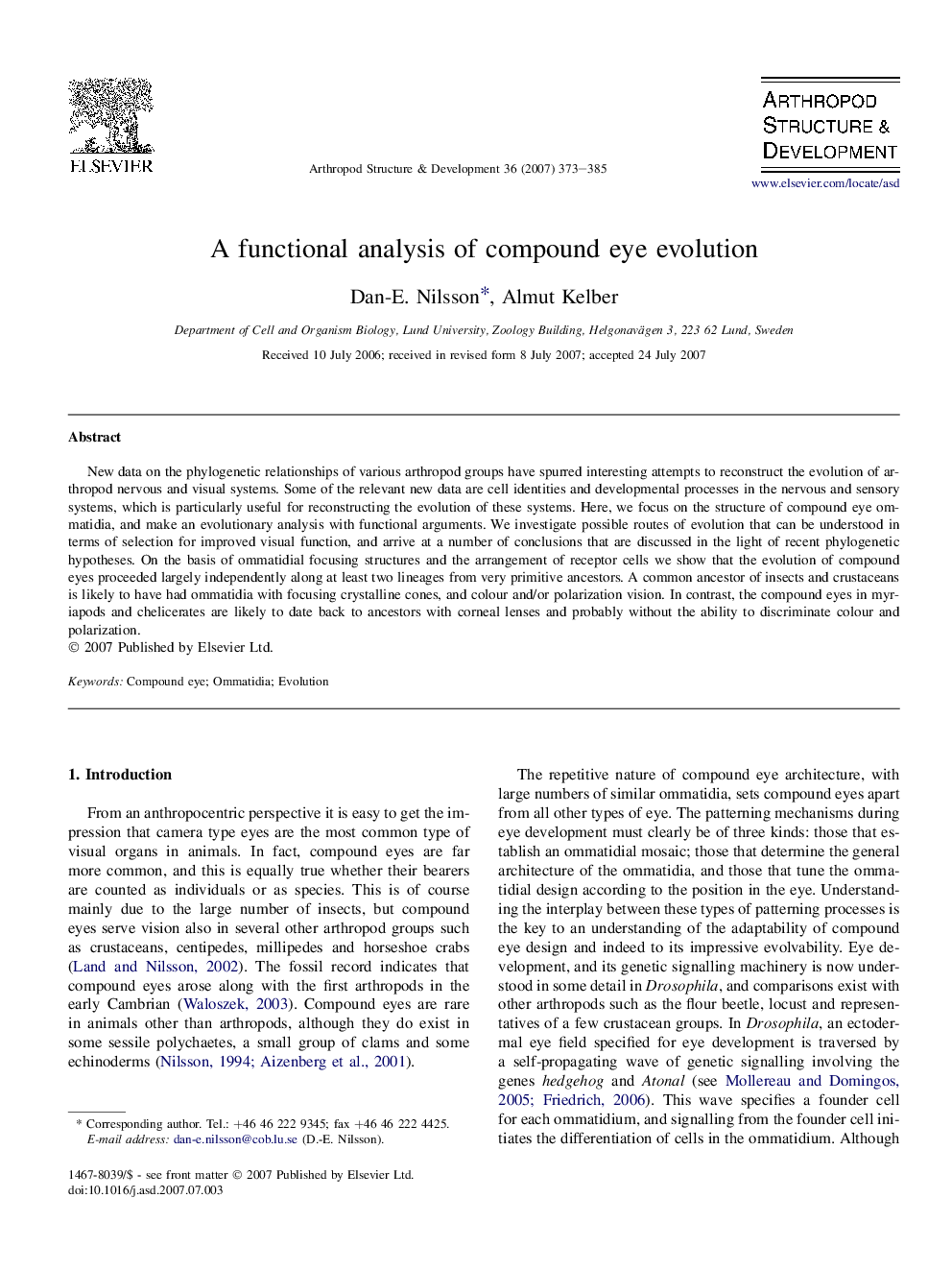| کد مقاله | کد نشریه | سال انتشار | مقاله انگلیسی | نسخه تمام متن |
|---|---|---|---|---|
| 2779018 | 1153190 | 2007 | 13 صفحه PDF | دانلود رایگان |

New data on the phylogenetic relationships of various arthropod groups have spurred interesting attempts to reconstruct the evolution of arthropod nervous and visual systems. Some of the relevant new data are cell identities and developmental processes in the nervous and sensory systems, which is particularly useful for reconstructing the evolution of these systems. Here, we focus on the structure of compound eye ommatidia, and make an evolutionary analysis with functional arguments. We investigate possible routes of evolution that can be understood in terms of selection for improved visual function, and arrive at a number of conclusions that are discussed in the light of recent phylogenetic hypotheses. On the basis of ommatidial focusing structures and the arrangement of receptor cells we show that the evolution of compound eyes proceeded largely independently along at least two lineages from very primitive ancestors. A common ancestor of insects and crustaceans is likely to have had ommatidia with focusing crystalline cones, and colour and/or polarization vision. In contrast, the compound eyes in myriapods and chelicerates are likely to date back to ancestors with corneal lenses and probably without the ability to discriminate colour and polarization.
Journal: Arthropod Structure & Development - Volume 36, Issue 4, December 2007, Pages 373–385